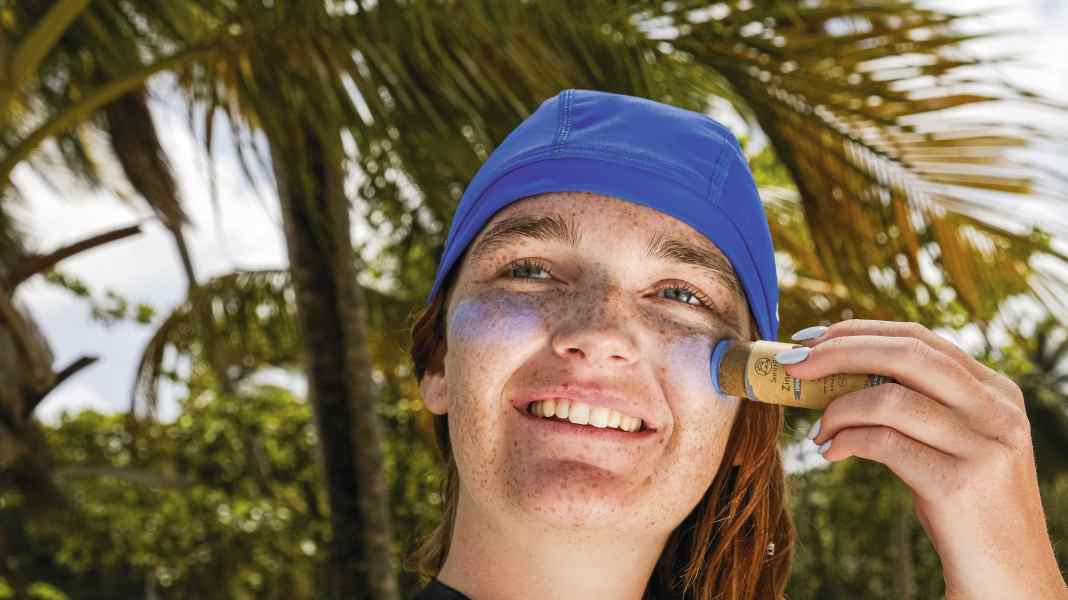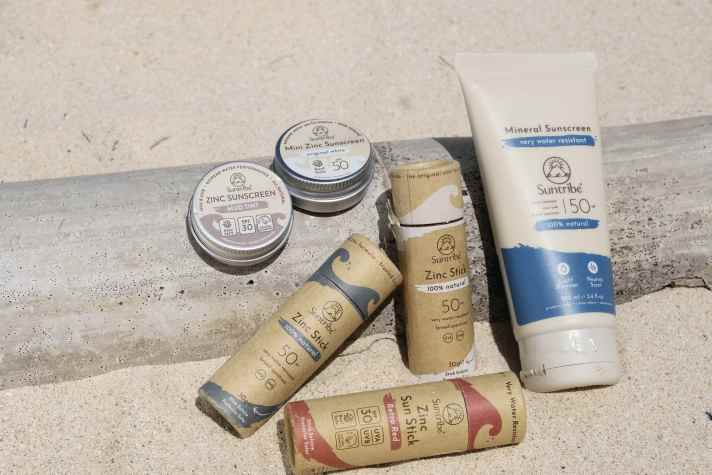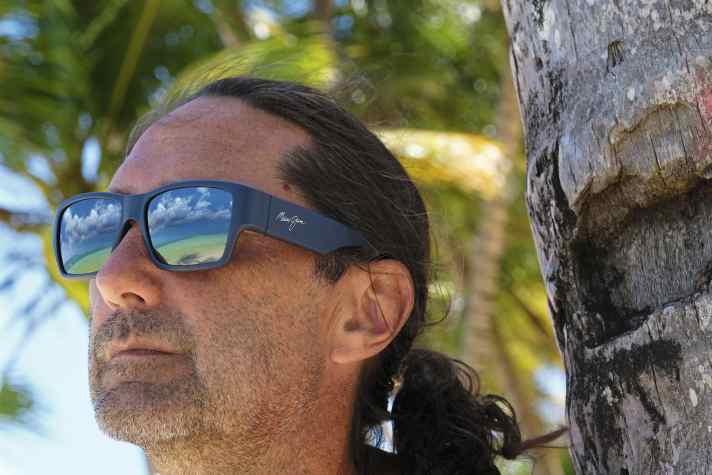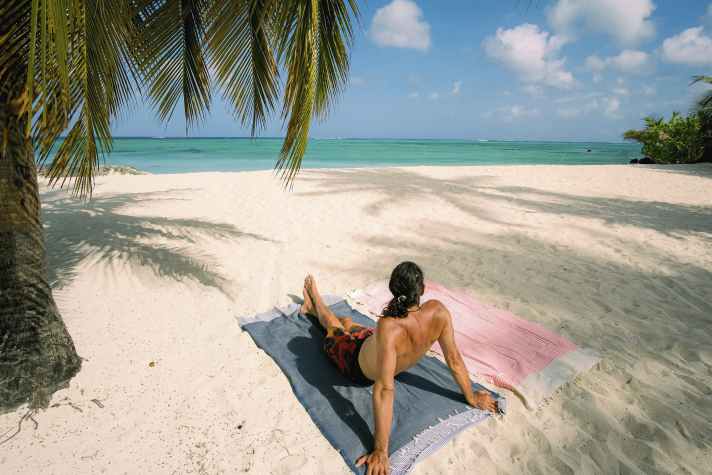Surf & Style: Mineral sun cream, beach towels and sunglasses for the summer session

Vitamin E is essential for life and is produced in the skin through - dosed - exposure to sunlight. However, just 20 to 30 minutes of daily exposure to the Central European summer sun is enough. Surfers who spend hours waiting for waves on their boards in the scorching sun feel the dose of "too much of a good thing" much more than we windsurfers do in the cooling breeze. Caps, hats and completely white or coloured faces are therefore more common in the surfer line-up. For Nico Meisner, founder of Buster Surfboards, a cap and a high sun protection factor are as much a part of water sports as a leash and surf wax after his own skin problems. He also developed a cap for his own benefit that not only offers particularly good protection, but is also a pleasure to wear on the beach.
And a mineral-based sun protection collection in the portfolio is designed to enable long, carefree sessions. Because there are big differences in the protection mechanism and water resistance of sunscreens - for people and the environment. In the case of sunscreen, "waterproof" means that 50 per cent of the protective effect remains after two 20-minute baths. Not enough for a long surfing session in the scorching sun. According to our practical windsurfing test, the Suntribe collection based on mineral ingredients clearly exceeds this requirement. Cream, make-up tin or stick offer the right solution for every situation >> available here.
Mineral vs. chemical sun cream
Mineral and chemical protective agents differ fundamentally. While chemicals only develop their effect in the skin, mineral products are applied thickly - as a visible protective layer, often with a greasy sheen or in colour. When it comes to chemical sunscreens, which are based on such tasty-sounding substances as oxybenzone, octinoxate or octocrylene, it's not just coral lovers who have their alarm bells ringing.
Mineral sunscreens are less convenient to apply - but are very water-resistant and well tolerated."
These substances are being targeted as potentially harmful to corals and have been banned in Hawaii since 2021. In the case of mineral UV protection, on the other hand, the main components zinc oxide and titanium dioxide, which reflect UV radiation, are considered to be comparatively environmentally friendly. What's more, they usually significantly exceed the required standard for the "waterproof" seal. To be considered waterproof, a protective product in the EU only has to retain 50 per cent of its original protective effect after two 20-minute standardised bathing sessions. With real water sports, however, the wear and tear is probably significantly higher.

In past windsurfing tests in the Caribbean sun, most sun creams - without regular reapplication - had a slight lobster look despite the LF 50. In contrast, during the current test with an entire mineral-based collection in our luggage, a comparatively elegant pallor actually prevailed. However, with mineral creams - depending on the brand and consistency - you have to put up with a slightly greasy complexion or a Dracula look suitable for carnival. The tested Suntribe Mineral Sunscreen is still comparatively discreet. The small tin for applying make-up at night and the stick that keeps hands clean during a quick make-up session on the beach are practical. Mineral cream adheres to the skin better than any dirt on a bicycle chain and cannot be rubbed off, even after long swims and accidental rubbing. It therefore retains its protective effect for a particularly long time.
Stylish sunglasses from Maui Jim

These sunglasses are not just a cool summer accessory, but also useful protection - especially on the water and on the beach. Polarised lenses take away reflections from the water (anglers use them to spot fish) and make the sky look like a 3D animation - St. Peter suddenly looks like Saint Lucia. These Maui Jim Ka'olu made of silicate glass (265 euros) even provide good protection against the sun coming in from the side. More at mauijim.com
Beach towel instead of towel from Jady 19

Beach towel instead of hand towel - the smart beach towels from Jady 19 lie well on the sand and are right on trend. Thin, light, but with a pleasant feel and a comfortable lying position as a stylish alternative to the floral terry towel. Preferably on sand - we are still waiting for the 6 mm pozo edition. These chic towels are made from organic cotton, developed and designed in Hamburg. Price: 34.95 euros, more at jady19.de

